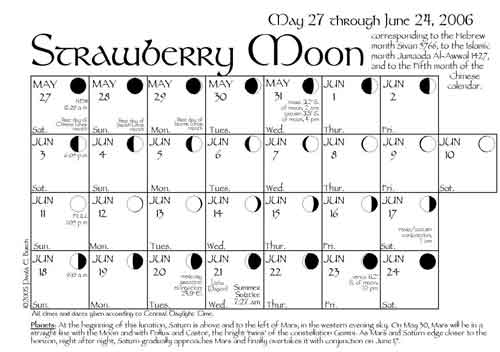|
|
- Can you even imagine time without breaking it up
into seven-day weeks?
- Would you like to be more in touch with the seasons, planets,
moon, and stars?
- Are you
tired of calendars that often list the moon's quarters on the wrong days,
because they're set for a far-away time zone and don't bother to
correct for North American longitudes?
Click on the calendar page below to see this month's lunisolar calendar full size.

|
|